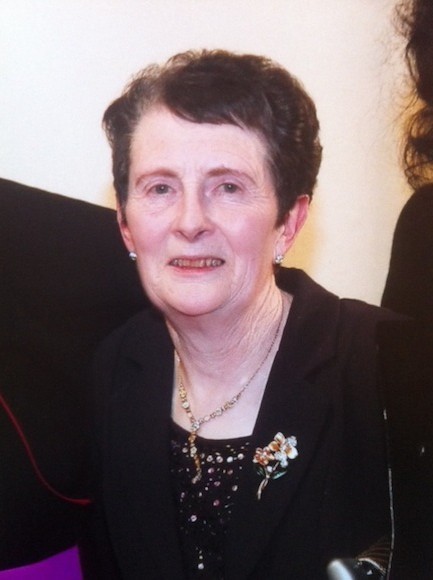A heartbroken daughter has recalled how her family “waited and waited and waited” for an ambulance to arrive as her elderly mother lay dying on an Inishowen roadside.
Shortly before 5.45pm on December 30, 2014, Maura Porter was knocked down near her home in Carndonagh.
The 70-year-old mother of two, who was walking home from Mass, died several hours later at Altnagelvin hospital in Derry.
Her heartbroken daughter Davina still vividly remembers the intervening time as she, her father Neil and brother Brendan “waited and waited and waited” for an ambulance to arrive.
She told the Irish Independent “They say it was 50 minutes, but it felt a lot longer than that. The problem was the ambulance had to come from Letterkenny Hospital, but the first available vehicle was two-and-a-half hours away.
“They sent for a Sligo ambulance instead, two hours away, I thought it was ridiculous, I couldn’t believe we would have to wait so long in the ice cold with life draining from my mum on the side of the road. It was horrific.
“Every minute felt like an hour. Most of the ambulances were tied up in Letterkenny discharging patients but that is not an excuse,” she said.
Her father, a retired fireman, tried to make his beloved wife comfortable, as nurses who happened to be driving by also stopped to help. But Mrs Porter was suffering internal bleeding.
Fifty minutes later an ambulance arrived from Letterkenny, 62km away, to bring Mrs Porter to Derry.
“It took the paramedics half-an-hour to work with her on site, they were very good, it’s not their fault, we appreciate their efforts but it was too late,” she said, adding that the family are still awaiting the inquest into Mrs Porter’s death.
Her son Brendan described the Ireland’s ambulance service as “life-threatening” and “light years” behind services in Northern Ireland and the UK.
“People have no idea how bad the service is until they are faced with it. I promised my mother that night that I would try to make an improvement to the nationwide service,” he said.
Every day, Davina drives past the spot where her mum was struck.
A feeling of dread and hopelessness returns each time.
“People don’t realise until it happens to them. We only live two minutes from an ambulance bay in Carndonagh and on that night there was two ambulances parked there with no drivers.
“It could happen to anyone and people really are not aware of the problem. In hindsight maybe we should have lifted her up off the road and taken the gamble ourselves, she was so badly hurt. Maybe she could have made it, but we’ll never know. She had a lot of living to do, but she wasn’t given the chance she deserved.”
Davina speaks as we reveal some counties are being left with just two ambulances providing cover around the clock.
Just two emergency ambulances are on day shifts in counties Carlow, Leitrim and Longford seven days a week, while Sligo, Monaghan and Laois are also regularly covered by just two vehicles.
Figures obtained by the Irish Independent show that Carlow, Sligo, Meath, Longford, Donegal, and Laois sometimes have just one ambulance on night duty.
The startling figures obtained from the HSE show that more than 20 ambulances cover day shifts in Dublin on a daily basis, with 16 in Cork, around 12 in Donegal, seven in Kerry, five in Wexford and four in Roscommon.
One paramedic said ambulances are often forced to travel more than 60km to the scene of an accident, which can put the lives of injured people at risk.
“The sooner someone can get to a centre of care the better. The greater the delay outside the ‘golden hour’ the greater the chances of a poorer outcome,” said the paramedic.
Last year, a HSE review of the National Ambulance Service (NAS) found it “cannot possibly achieve” the eight-minute target for responding to life-threatening calls due to “immense difficulties with rurality in Ireland”.
In 2014, less than 7pc of these calls were responded to within the eight-minute timeframe.
Deputy Charlie McConalogue said he is aware of a number of incidents of emergency ambulance delays in his Donegal constituency.
“There is a need for additional ambulance staff to ensure cover is there. The ambulance vehicles don’t seem to be the issue as much as staffing them.”
A spokesperson for the NAS stated that “resources are dispatched to calls across the country from the National Emergency Operations Centre on a nearest available (to the incident) basis and not on a county boundary basis.
“At a local level, the NAS is supported by more than 140 community first responder schemes, responding to particular types of medical emergencies (cardiac arrest, respiratory arrest, chest pain, choking and stroke) where it is essential for the patient to receive immediate life-saving care whilst an emergency response vehicle is en route to the patient.”
In 2016 the NAS responded to 343,000 ambulance calls, and transported 44,000 intermediate care patients.
Tags:







